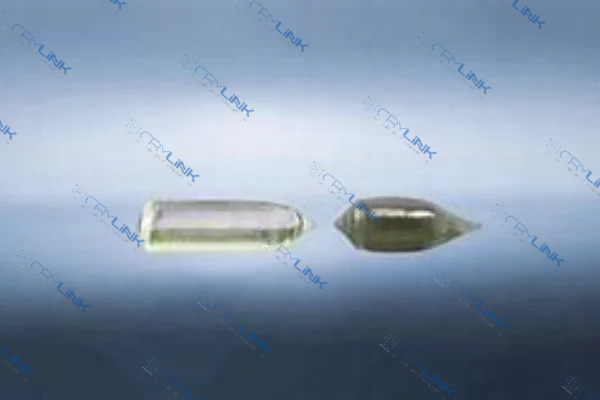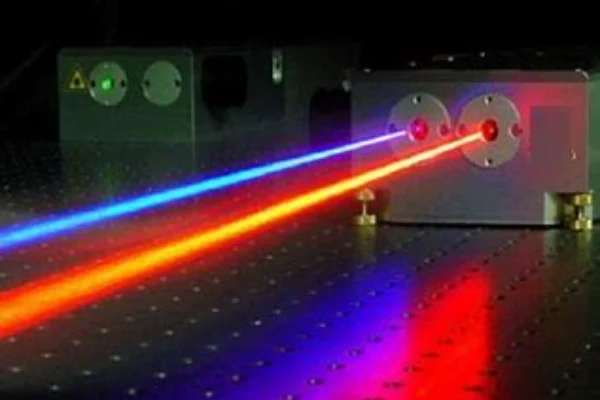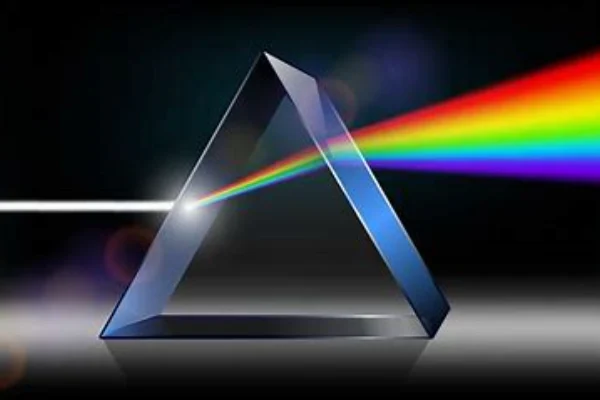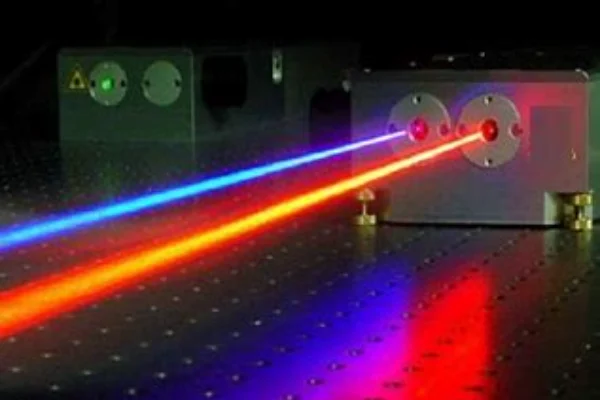Introduction
Mid-infrared (mid-IR) imaging systems have garnered significant attention due to their unparalleled abilities in various applications such as thermal imaging, spectroscopy, and remote sensing. Central to these systems’ effectiveness is the source of the mid-IR signal. Enter Tm:YAP crystals, a leading contender in mid-IR generation. This article explores the myriad advantages Tm:YAP crystals bring to the table, particularly when pitted against other mid-IR sources.

The Essence of Tm:YAP Crystals
Fundamental Properties
Tm:YAP (Thulium-doped Yttrium Aluminum Perovskite) crystals are a groundbreaking advancement in the field of infrared technology. Boasting a broad emission spectrum specifically in the mid-infrared range, they stand as a testament to the possibilities of material science and optical physics. The foundation of their appeal lies in their intrinsic properties. Mid-infrared, or more commonly known as mid-IR, holds significant potential in various scientific, industrial, and even medical applications. As such, the efficiency and stability of a mid-IR source are paramount, and that’s precisely what Tm:YAP crystals offer.
Unlike other materials that may deteriorate or provide inconsistent results over time, Tm:YAP crystals ensure that devices or systems using them maintain peak performance. Their structural integrity, combined with their ability to resist environmental factors such as temperature fluctuations, positions them as a reliable choice for long-term applications. Moreover, the versatility these crystals offer is commendable. Be it for high-resolution imaging systems or intricate spectroscopic applications, the broad emission range of Tm:YAP caters to diverse needs. This adaptability is particularly beneficial as it negates the requirement for multiple materials or sources, thus simplifying setups and reducing associated costs.

Generation of Mid-IR Signals
The utilization of crystals for mid-IR signal generation hinges on the fascinating process known as up-conversion. At its core, up-conversion is an intricate dance of photons. When the crystals are exposed to near-infrared light, instead of directly emitting photons in the same frequency, they absorb these photons and release them as mid-infrared signals. This isn’t a mere absorption and emission; it’s a conversion from one wavelength to another, which is where the magic lies.
What makes this process especially remarkable is its efficiency. In many other materials, similar conversions might result in significant energy losses, producing weaker signals. However, with Tm:YAP crystals, the conversion is highly efficient, ensuring that the generated mid-IR signals are both strong and clear. This clarity is paramount in applications where precision is essential, such as thermal imaging where subtle differences in temperature can be critical.
Furthermore, the up-conversion process in Tm:YAP ensures that the crystal remains largely unaffected by external interference. In many imaging or sensing scenarios, background noise or other signals can distort the desired outcome. However, due to the distinct conversion process, Tm:YAP-generated signals are notably pure and undistorted, paving the way for clearer, more accurate results in all applications.
Advantages in Thermal Imaging
Thermal imaging stands as a cornerstone in various industries, from surveillance and security to medical diagnostics and industrial inspections. Amid the vast arsenal of tools available for this purpose, Tm:YAP crystals have emerged as a formidable contender, setting new benchmarks in both resolution and sensitivity.
The distinction of Tm:YAP crystals starts with their superior resolution and clarity. A common challenge with many mid-IR sources used in thermal imaging is the compromise between the range of detection and the clarity of the resulting image. Tm:YAP crystals, blessed with a broad emission spectrum, bridge this gap masterfully.
As they radiate across this wide spectrum, they can discern and capture even the most intricate details. Whether it’s the minutiae of a circuit board or the faint heat signature of a distant object, these crystals ensure that no detail is too small or too distant to escape notice. This precision becomes indispensable, especially when the clarity of an image can make the difference between spotting a potential hazard and overlooking it.
But resolution is just one side of the coin. Sensitivity, often the unsung hero of thermal imaging, plays an equally vital role. The real prowess of Tm:YAP crystals shines through their enhanced sensitivity. Owing to their inherent properties, these crystals respond to the faintest of temperature variations. In many scenarios, especially in industrial settings, early detection is the key to preventing major malfunctions or disasters.
A machine component heating up slightly more than usual might indicate an impending failure. Similarly, in medical diagnostics, the ability to detect minute temperature differences can be crucial in identifying inflammation or infections. With Tm:YAP’s heightened sensitivity, such subtle variations don’t go unnoticed. This not only ensures safety and early intervention but also saves potential costs associated with late-stage interventions or repairs.
In essence, when it comes to thermal imaging, Tm:YAP crystals offer an unmatched combination of resolution and sensitivity. They ensure that images are not just clear, but also incredibly informative, making them an invaluable tool in a plethora of applications.

Spectroscopy: Revealing the Unseen
Spectroscopy represents one of the most versatile and informative analytical techniques, allowing scientists and researchers to investigate substances at the molecular level. Tm:YAP crystals have introduced a new dimension to this field by overcoming some of the longstanding challenges, chiefly in terms of spectral range and signal quality.
In the realm of spectroscopy, the ability to scan across a broad spectral range is not just a convenience but a necessity. Different compounds and materials interact with light at various wavelengths, meaning that a narrow spectral range can severely limit the scope of detection. Tm:YAP crystals, known for their wide emission spectrum, triumph in this regard. They can cover a wide spectral range, thus enabling the detection and analysis of a plethora of compounds.
Whether it’s identifying the components of an unknown substance, tracking environmental pollutants, or understanding the chemical structure of a new material, the broad spectral reach of Tm:YAP crystals opens doors to vast possibilities. It’s akin to having a universal key that can unlock the secrets hidden within the most diverse array of substances.
The other vital advantage that Tm:YAP brings to the table is its inherently high signal-to-noise ratio. Spectroscopic analysis often deals with faint signals that are embedded in a sea of ‘noise’ or unwanted signals. Distinguishing the relevant information from this noise is paramount for accuracy. A high signal-to-noise ratio is like having a clear conversation in a quiet room instead of a noisy marketplace. Tm:YAP’s efficiency in converting input to output ensures that the signals it produces are clear and distinct, which drastically reduces the risk of false positives or misinterpretations. This precision is vital in contexts where even a small mistake can lead to serious consequences, such as pharmaceutical manufacturing, forensic analysis, or quality control in food processing.
In summary, the incorporation of Tm:YAP crystals in spectroscopic systems elevates the capabilities to new heights. By offering both a broad spectral range and a high signal-to-noise ratio, they enhance the range and reliability of detection. This dual advantage makes Tm:YAP an exciting addition to the toolkit of spectroscopy, enabling discoveries and innovations that were previously beyond reach. It’s more than a technological advancement; it’s a leap towards a future where the unseen is no longer a mystery but a landscape ready to be explored and understood.

Remote Sensing: Looking Beyond the Obvious
In an age where our ability to see beyond our immediate environment can provide critical advantages, remote sensing has emerged as an indispensable tool. Whether for environmental monitoring, security surveillance, or scientific research, the value of observing from a distance cannot be understated. Enter Tm:YAP crystals, which have significantly augmented the potential of remote sensing.
One of the standout abilities of Tm:YAP in this domain is long-distance detection. The strength and clarity of the signals they generate mean that distant objects or phenomena can be monitored with remarkable precision. Imagine satellites capturing the minute details of vegetation health or aerial drones surveilling vast stretches of land for security reasons; the applications are vast and impactful.
Yet, our world isn’t always accommodating. Weather can often act as a formidable adversary to remote sensing. However, Tm:YAP crystals display an admirable resilience. Even in challenging weather conditions like fog or rain, where other systems might falter, Tm:YAP remains undeterred. The crystals continue to produce consistent mid-IR signals, ensuring that the imaging process remains smooth and uninterrupted.

Tm:YAP vs. Other Mid-IR Sources
Stepping into the comparative realm, Tm:YAP’s distinction becomes even more pronounced. Many mid-IR sources, while competent, grapple with issues of consistency. Over time, their signal generation might vary, leading to inconsistent results. Tm:YAP, contrastingly, epitomizes stability. Throughout its operational life, it promises and delivers uniformity, ensuring that systems depending on it aren’t left with fluctuating performance levels.
Yet, it’s not just about consistency. The world of mid-IR is vast, encompassing myriad applications. Some sources are designed with a narrow focus, excelling in particular tasks but falling short elsewhere. Tm:YAP stands out with its versatility. Its broad emission spectrum means it isn’t just confined to one or two applications. From medical imaging to industrial inspections, its adaptability shines through, making it a go-to choice for diverse needs.
Lastly, a nod to the economics of technology is essential. Tm:YAP, while requiring an upfront investment, underscores the adage that quality pays for itself. Given its efficiency, the reduced frequency of replacements, and the superior imaging it offers, it emerges as a cost-effective option in the long run. When the broader picture of operational costs, maintenance, and performance is considered, Tm:YAP holds its own, marking itself as a prudent investment for the future.
Conclusion
Tm:YAP crystals represent a significant step forward in the world of mid-infrared imaging systems. With their numerous advantages in thermal imaging, spectroscopy, and remote sensing, they stand head and shoulders above other mid-IR sources. For those seeking consistent, high-quality imaging solutions, Tm:YAP offers a promising and efficient route.
FAQs
- What is the primary mechanism behind Tm:YAP’s mid-IR generation?
- Tm:YAP generates mid-IR signals primarily through a process called up-conversion.
- How does Tm:YAP fare in adverse weather conditions?
- Tm:YAP remains efficient and consistent in generating mid-IR signals, even in challenging weather conditions like fog or rain.
- Is Tm:YAP suitable for long-distance remote sensing?
- Absolutely. Tm:YAP’s strong signal generation allows for detection and interpretation from greater distances.
- How does Tm:YAP’s cost compare to other mid-IR sources?
- While the initial investment might be higher, Tm:YAP’s efficiency, longevity, and versatility make it a cost-effective choice in the long run.
- In what applications is Tm:YAP’s high signal-to-noise ratio particularly beneficial?
- A high signal-to-noise ratio is especially beneficial in spectroscopy, ensuring precise readings and minimizing the risk of misinterpretations.

Frank
Frank graduated from the University of Shanghai for Science and Technology, majoring in optics. As a technical engineer at Crylink Company, he deeply understands crystal materials and laser components.
Related Video(s) with this Article
Related Product(s) with this Article
Related Application(s) with this Article
